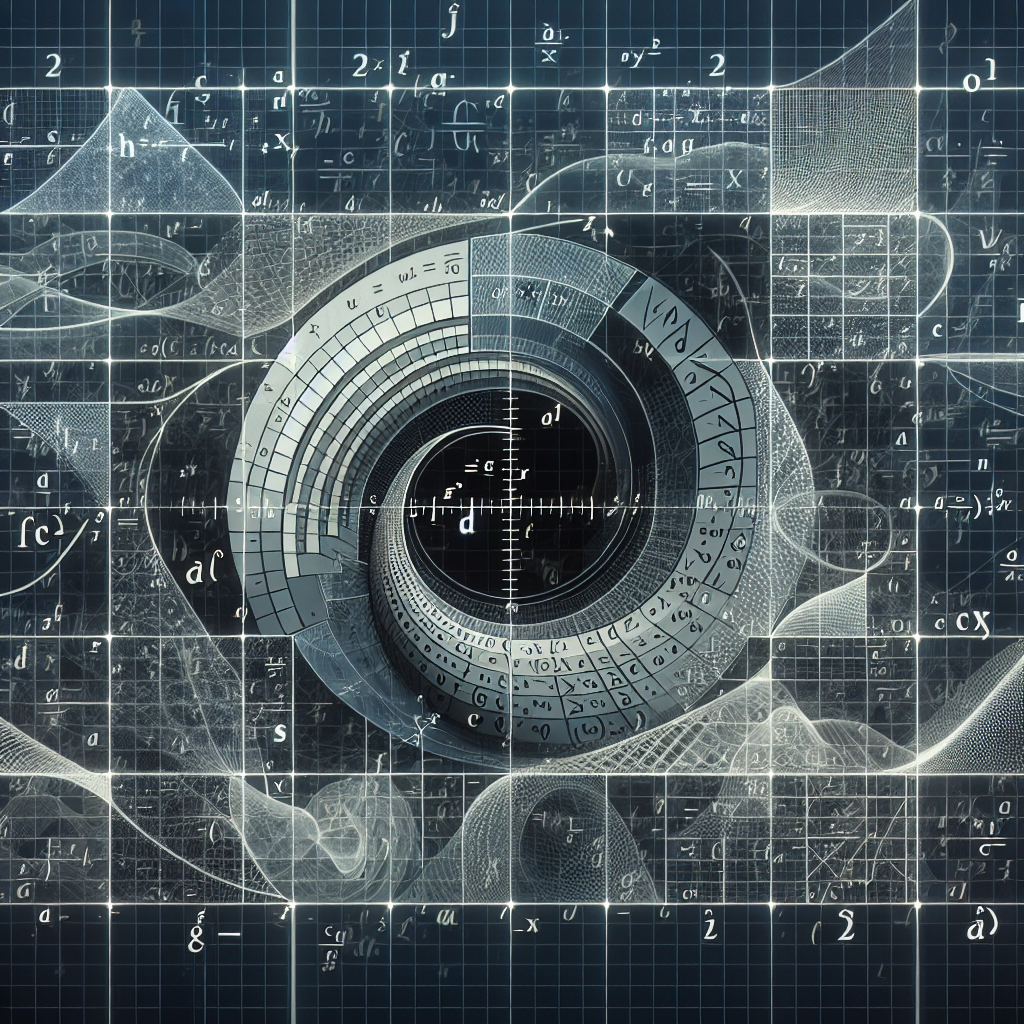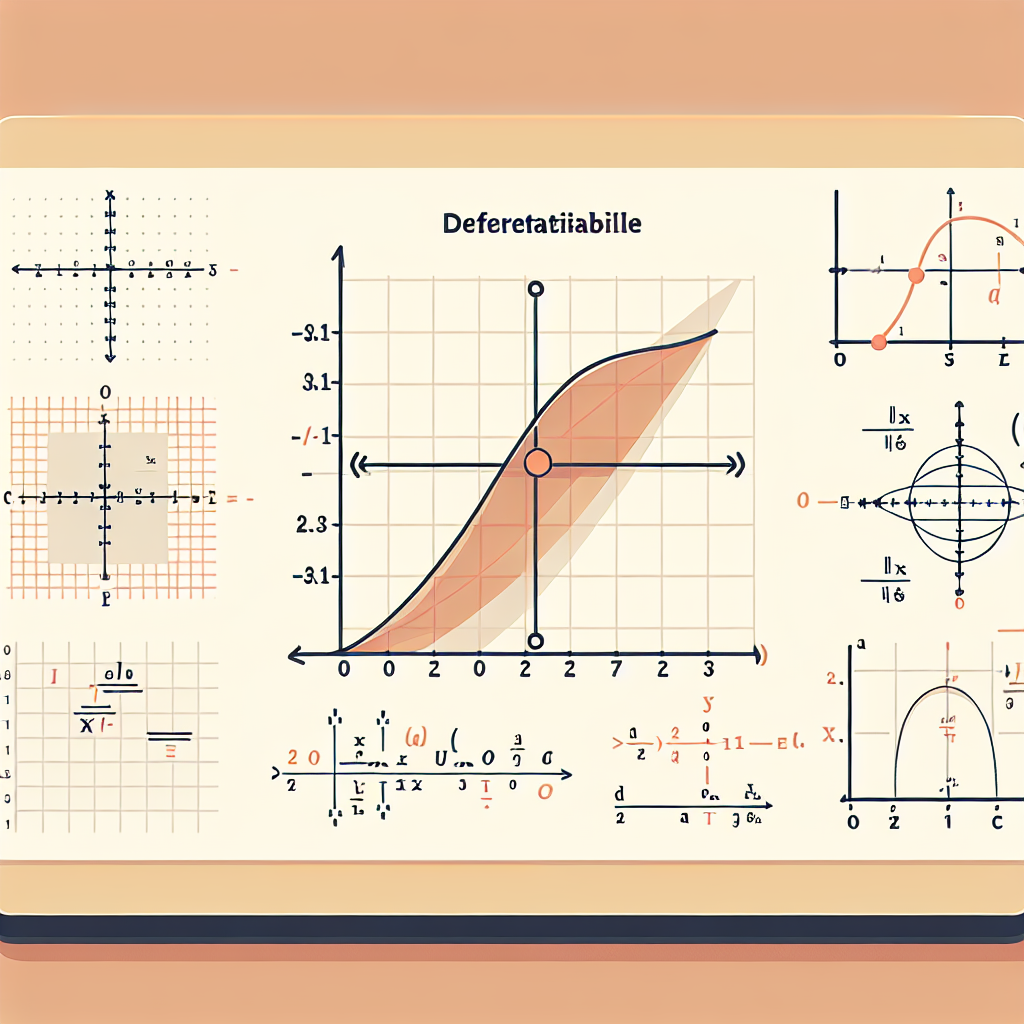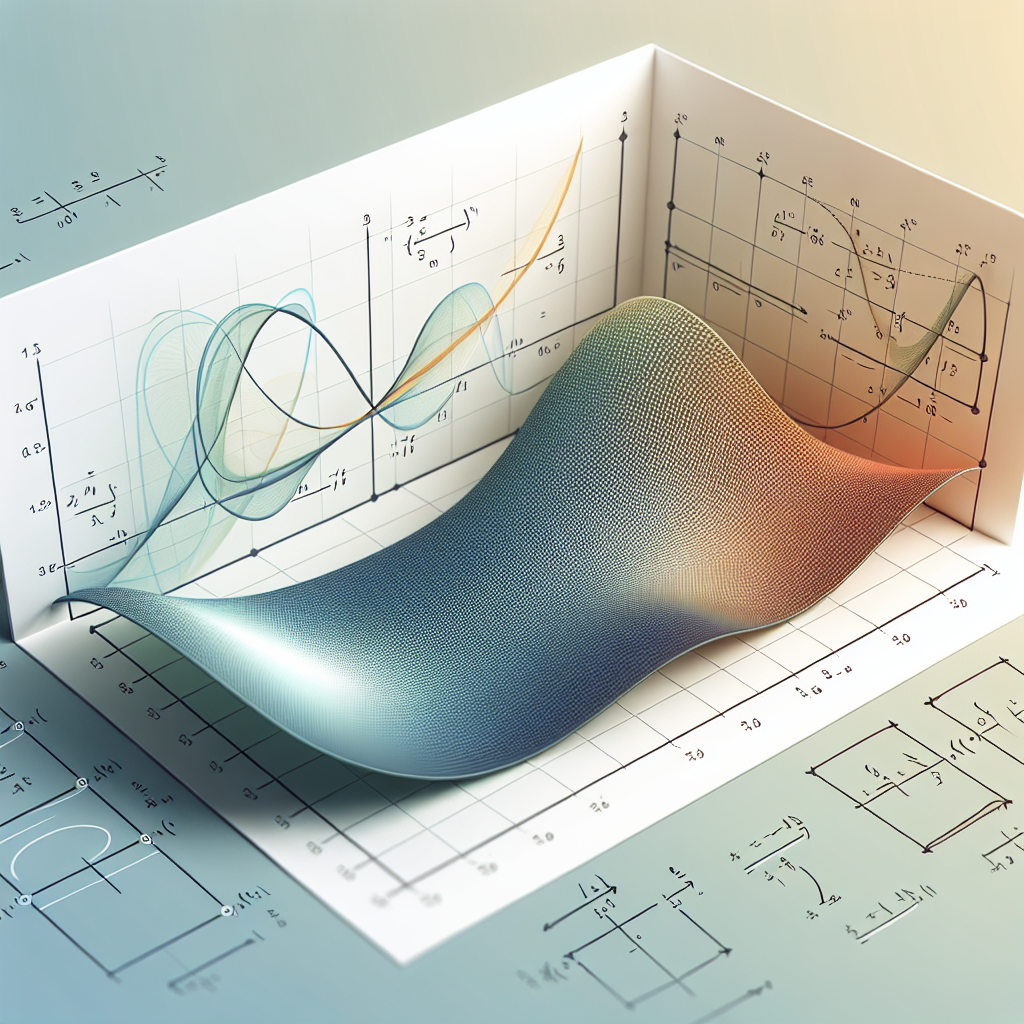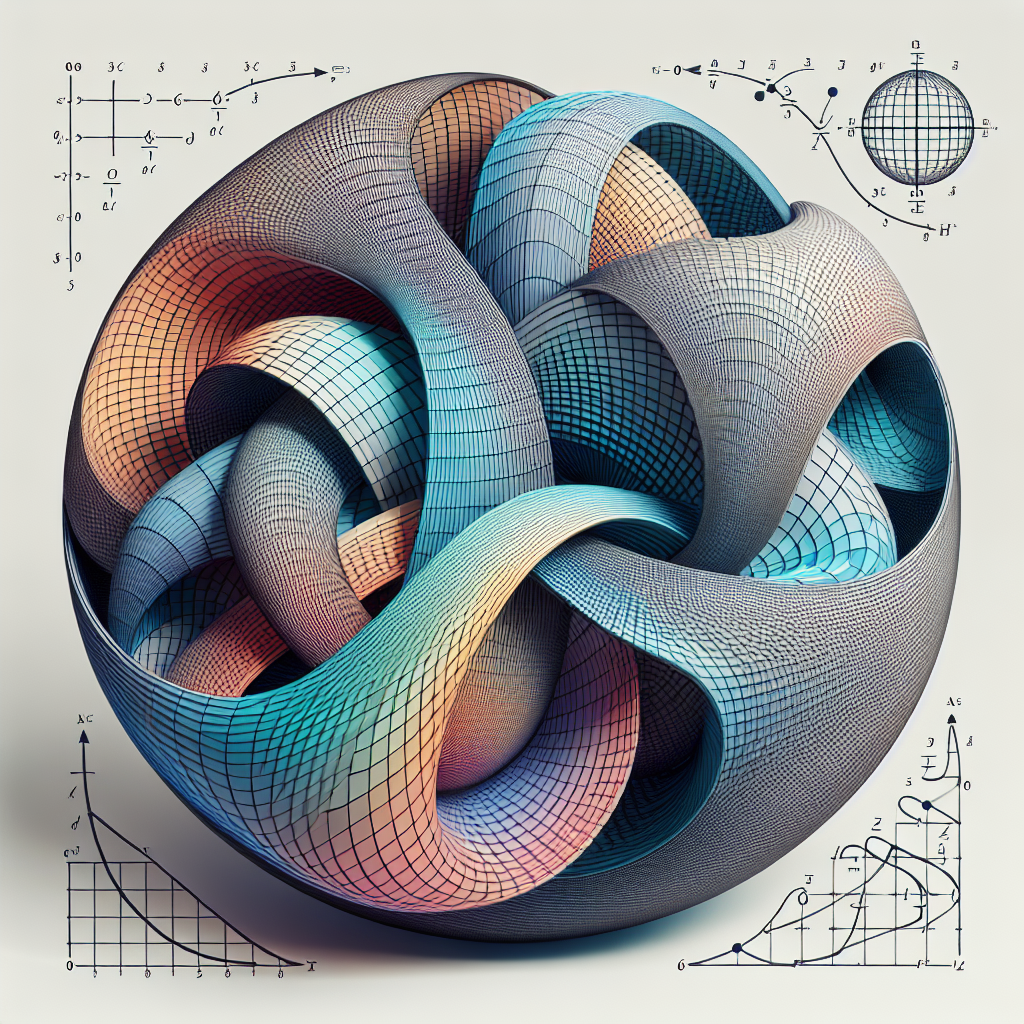In the realm of calculus, the concept of a differentiable function plays a pivotal role.
Understanding this concept can unlock a deeper comprehension of many mathematical phenomena.
But what exactly is a differentiable function?
In simple terms, it's a function that has a derivative. This means that at any point on the function's graph, you can draw a tangent line.
This tangent line gives us valuable information. It tells us about the function's rate of change at that specific point.
But the concept of differentiability goes beyond just having a derivative.
A function being differentiable also implies that it's smooth and continuous. There are no sharp corners or breaks in the graph.
This characteristic is crucial in many areas of mathematics and real-world applications.
For instance, in physics, differentiable functions are used to describe motion and forces. In economics, they help model growth and change.
In this article, we'll delve into the basics of differentiable functions. We'll explore their properties, their significance, and their applications.
Whether you're a student, a professional, or a math enthusiast, this guide will help you grasp the concept of differentiability.
So, let's embark on this mathematical journey together.
What is a Differentiable Function?
A differentiable function is a fundamental concept in calculus.
It's a function that has a derivative at every point in its domain.
But what does it mean for a function to have a derivative?
In essence, the derivative of a function at a certain point is the slope of the tangent line to the function's graph at that point.
This slope represents the rate of change of the function at that specific point.
For a function to be differentiable, it must be possible to draw a tangent line at any point on its graph.
This implies that the function must be smooth and continuous, without any sharp corners or breaks.
A function that is not differentiable at a certain point usually has a discontinuity or a sharp turn at that point.
Differentiability is a local property.
This means that a function can be differentiable at some points and not differentiable at others.
For example, the absolute value function is differentiable everywhere except at zero.
At zero, the graph makes a sharp turn, and we can't draw a unique tangent line.
Differentiability also has implications for the function's behavior.
A differentiable function is often easier to analyze and understand.
Its graph is predictable and follows a certain pattern.
Moreover, differentiable functions are often used in mathematical modeling.
They can represent a wide range of phenomena in physics, economics, engineering, and other fields.
Understanding differentiable functions is thus crucial for anyone studying or working with calculus.
In the following sections, we'll delve deeper into the properties and applications of differentiable functions.
We'll also explore how to determine if a function is differentiable at a certain point.
So, let's continue our exploration of this fascinating mathematical concept.
The Importance of Differentiability in Calculus
Differentiability plays a key role in calculus.
It's a property that allows us to understand how a function behaves at a certain point.
The derivative of a function, which is the slope of the tangent line at a point, gives us the rate of change of the function at that point.
This is crucial in many areas of mathematics and science.
For instance, in physics, the derivative of a position function gives us the velocity.
The derivative of a velocity function, in turn, gives us the acceleration.
In economics, the derivative of a cost function can represent the marginal cost.
This is the cost of producing one additional unit of a good.
In biology, the derivative of a population function can represent the growth rate of the population.
Differentiability also allows us to make predictions about a function.
If we know the function is differentiable and we know its derivative, we can predict the function's behavior in the near future.
This is the basis of many prediction models in science and engineering.
Differentiability is also crucial for optimization.
In many real-world problems, we want to find the maximum or minimum of a function.
The derivative of the function can help us find these maxima and minima.
For instance, in business, a company might want to find the price that maximizes profit.
The derivative of the profit function can help the company find this optimal price.
Differentiability also plays a role in numerical methods.
These are methods used to approximate solutions to mathematical problems.
Many of these methods, like the Newton-Raphson method, rely on the derivative of a function.
In conclusion, differentiability is a fundamental concept in calculus.
It's a property that allows us to understand and predict the behavior of functions.
It's also crucial for optimization and numerical methods.
Understanding differentiability is thus essential for anyone studying or working with calculus.
How Differentiability Implies Continuity
Differentiability and continuity are two key concepts in calculus.
They are closely related, but they are not the same.
A function is said to be continuous at a point if the limit of the function as it approaches that point exists and is equal to the function's value at that point.
In simpler terms, a function is continuous if you can draw its graph without lifting your pen from the paper.
On the other hand, a function is differentiable at a point if it has a derivative at that point.
This means that the function has a well-defined slope at that point.
Now, here's the interesting part: if a function is differentiable at a point, then it is also continuous at that point.
This is because the existence of a derivative at a point implies that the function is well-behaved at that point.
In other words, there are no sudden jumps or breaks in the function at that point.
However, the converse is not true.
A function can be continuous at a point but not differentiable.
For example, the absolute value function is continuous everywhere but not differentiable at zero.
This is because the function has a sharp corner at zero, and so it does not have a well-defined slope at that point.
So, while differentiability implies continuity, continuity does not necessarily imply differentiability.
Understanding this relationship between differentiability and continuity is crucial for studying calculus.
It helps us understand how functions behave and how we can work with them.
Derivatives and the Slope of a Tangent
The derivative of a function is a fundamental concept in calculus.
It measures how a function changes as its input changes.
In geometric terms, the derivative at a point is the slope of the tangent line to the function's graph at that point.
Consider a function f(x).
The derivative of f at a point x, denoted by f'(x) or df/dx, gives the rate of change of f at x.
If f'(x) is positive, then f is increasing at x.
If f'(x) is negative, then f is decreasing at x.
If f'(x) is zero, then f has a horizontal tangent line at x.
This could mean that f has a local maximum or minimum at x, or that f has a point of inflection at x.
The process of finding the derivative of a function is called differentiation.
There are several rules and techniques for differentiation, such as the power rule, the product rule, the quotient rule, and the chain rule.
These rules make it easier to find the derivative of complex functions.
The derivative of a function can also be interpreted as the function's speed or velocity.
For example, if a function represents the position of a moving object, then its derivative represents the object's speed.
This is why derivatives are widely used in physics and engineering to describe motion and change.
The concept of a derivative also extends to functions of more than one variable.
In this case, we talk about partial derivatives, which measure how the function changes with respect to one variable, keeping the other variables constant.
The collection of all partial derivatives of a function is called the gradient of the function.
The gradient is a vector that points in the direction of the greatest rate of increase of the function.
Understanding derivatives and their geometric interpretation is crucial for studying calculus.
It provides a powerful tool for analyzing and understanding functions.
In the next sections, we will explore more about the applications and implications of derivatives and differentiable functions.
Real-World Applications of Differentiable Functions
Differentiable functions play a crucial role in various fields.
They are used to model and solve real-world problems.
In physics, differentiable functions describe the motion of objects.
For instance, the position of a falling object as a function of time is a differentiable function.
Its derivative gives the velocity of the object.
The second derivative gives the acceleration, which is constant for a freely falling object.
In economics, differentiable functions are used to model economic growth.
The derivative of a function representing a country's GDP gives the rate of economic growth.
Differentiable functions also model cost and revenue functions in business.
The derivative of a cost function gives the marginal cost, which is the cost of producing one more unit of a good.
Similarly, the derivative of a revenue function gives the marginal revenue, which is the additional revenue from selling one more unit of a good.
In engineering, differentiable functions are used in control systems.
The derivative of a function representing the output of a system gives the rate of change of the output.
This information is used to adjust the input to the system to achieve a desired output.
In computer graphics, differentiable functions are used to create smooth curves and surfaces.
The derivatives of these functions give the direction and rate of change of the curves and surfaces, which are used to generate realistic images.
In machine learning, differentiable functions are used in optimization algorithms.
The derivative of a function representing the error of a model gives the direction to adjust the model parameters to minimize the error.
This is the principle behind gradient descent, a popular optimization algorithm.
In environmental science, differentiable functions are used to model population dynamics.
The derivative of a function representing a population gives the rate of growth or decline of the population.
In medicine, differentiable functions are used to model the spread of diseases.
The derivative of a function representing the number of infected individuals gives the rate of spread of the disease.
These are just a few examples of the many applications of differentiable functions.
Understanding differentiable functions and their properties is essential for anyone working in these and many other fields.
In the next sections, we will delve deeper into the concept of differentiability and explore more of its implications.
Examples of Differentiable Functions
Differentiable functions are abundant in mathematics.
They are the building blocks of calculus.
Let's look at some examples.
The simplest example is the function f(x) = x.
This function is differentiable everywhere.
Its derivative, f'(x), is equal to 1 for all x.
Another example is the function g(x) = x^2.
This function is also differentiable everywhere.
Its derivative, g'(x), is equal to 2x for all x.
This means the slope of the tangent line to the graph of g at any point (x, x^2) is 2x.
Trigonometric functions are also differentiable.
For example, the function h(x) = sin(x) is differentiable everywhere.
Its derivative, h'(x), is equal to cos(x) for all x.
Here are some more examples of differentiable functions and their derivatives:
f(x) = e^x, f'(x) = e^x
g(x) = ln(x), g'(x) = 1/x (x > 0)
h(x) = tan(x), h'(x) = sec^2(x) (x ≠ π/2 + nπ, where n is an integer)
These examples illustrate the variety of differentiable functions and their derivatives.
In the next section, we will look at functions that are not differentiable and understand why.
Recognizing Non-Differentiable Functions
Not all functions are differentiable.
There are certain conditions where a function fails to be differentiable.
Let's explore these conditions.
A function is not differentiable at a point where it has a sharp turn or cusp.
For example, the function f(x) = |x| is not differentiable at x = 0.
This is because the graph of f has a sharp turn at this point.
A function is also not differentiable at a point where it has a vertical tangent.
For example, the function g(x) = x^(1/3) is not differentiable at x = 0.
This is because the graph of g has a vertical tangent at this point.
A function is not differentiable at a point where it is discontinuous.
For example, the function h(x) = 1/x is not differentiable at x = 0.
This is because the function h is not defined at x = 0.
These examples illustrate the conditions under which a function is not differentiable.
In the next section, we will discuss the role of differentiability in optimization problems.
Optimization and Differentiable Functions
Differentiability plays a key role in optimization.
Optimization is about finding the best solution.
In mathematics, it often means finding maxima or minima.
Differentiable functions are crucial in this process.
Why?
Because the derivative of a function gives us valuable information.
It tells us the rate of change of the function.
At a maximum or minimum point, this rate of change is zero.
This is why we set the derivative equal to zero when finding maxima or minima.
But there's more to it.
The second derivative can tell us whether a point is a maximum or minimum.
If the second derivative is positive, we have a minimum.
If it's negative, we have a maximum.
This is known as the Second Derivative Test.
Understanding differentiability is thus key to solving optimization problems.
In the next section, we will discuss how to test differentiability at a point.
Testing Differentiability at a Point
How do we test if a function is differentiable at a point?
The answer lies in the concept of a limit.
We use the limit definition of a derivative.
This definition states that a function is differentiable at a point if the limit of the difference quotient exists at that point.
The difference quotient is the ratio of the change in the function's value to the change in the variable.
As the change in the variable approaches zero, this ratio gives the derivative.
If this limit exists, the function is differentiable at the point.
If it doesn't, the function is not differentiable there.
But what does it mean for a limit to exist?
A limit exists if the left-hand limit equals the right-hand limit.
In other words, as we approach the point from both sides, the limit should be the same.
If the limits are different, the function is not differentiable at the point.
This is a key concept in calculus.
Understanding it is crucial for working with differentiable functions.
In the next section, we will discuss the graphical interpretation of differentiability.
Graphical Interpretation of Differentiability
What does differentiability look like on a graph?
The answer is quite intuitive.
A function is differentiable at a point if its graph is smooth at that point.
By smooth, we mean that the graph has no sharp corners or cusps.
It should not have any breaks or jumps either.
In other words, you should be able to draw a tangent line at any point.
This tangent line gives the derivative of the function at that point.
If you can't draw a tangent line, the function is not differentiable there.
For example, consider the absolute value function.
Its graph has a sharp corner at the origin.
This means it's not differentiable at that point.
On the other hand, the graph of a quadratic function is a smooth curve.
So, it's differentiable at all points.
This graphical interpretation of differentiability is a powerful tool.
It helps us understand the behavior of functions and their derivatives.
In the next section, we will delve into the concept of twice differentiable functions.
Twice Differentiable Functions and Concavity
What does it mean for a function to be twice differentiable?
Simply put, a function is twice differentiable if it has a second derivative.
This means you can take the derivative of the function twice.
The second derivative gives us valuable information about the function.
It tells us about the concavity of the function.
If the second derivative is positive at a point, the function is concave up there.
This means the graph of the function looks like a U at that point.
On the other hand, if the second derivative is negative, the function is concave down.
The graph of the function looks like an upside-down U at that point.
The points where the concavity changes are called inflection points.
These points are crucial in understanding the behavior of the function.
For example, let's consider the function g(x) = x^3 - 3x^2 + 2x.
The first derivative of g is g'(x) = 3x^2 - 6x + 2.
The second derivative of g is g''(x) = 6x - 6.
By setting g''(x) equal to zero, we find that the inflection point is at x = 1.
At this point, the concavity of the function changes.
This is a key characteristic of twice differentiable functions.
Understanding the concept of twice differentiability is crucial in calculus.
It helps us analyze and interpret the behavior of functions.
In the next section, we will explore the relationship between differentiability and the Mean Value Theorem.
The Mean Value Theorem and Differentiability
The Mean Value Theorem is a fundamental theorem in calculus.
It provides a link between the average rate of change of a function and its instantaneous rate of change.
The theorem states that if a function is continuous on the interval [a, b] and differentiable on the open interval (a, b), then there exists at least one point c in the interval (a, b) where the derivative of the function equals the average rate of change of the function over the interval.
In simpler terms, there is at least one point where the slope of the tangent line to the function equals the slope of the secant line through the endpoints of the interval.
This theorem is a powerful tool in calculus.
It helps us understand the behavior of functions and their derivatives.
For example, if we know that a function is differentiable and its derivative is always positive, then we can conclude that the function is increasing.
This is a direct application of the Mean Value Theorem.
The theorem also plays a crucial role in proving other important results in calculus.
For instance, it is used in the proof of the Fundamental Theorem of Calculus.
The Mean Value Theorem relies heavily on the concept of differentiability.
Without differentiability, the theorem would not hold.
This highlights the importance of differentiable functions in calculus.
In the next section, we will delve into some advanced concepts in differentiability.
Advanced Concepts in Differentiability
Differentiability is a fundamental concept in calculus.
However, it extends beyond the basics.
There are several advanced concepts related to differentiability that are worth exploring.
One such concept is the idea of higher-order derivatives.
A function is said to be twice differentiable if the derivative of the function is itself differentiable.
This leads to the concept of the second derivative, which provides information about the curvature or concavity of the function.
Similarly, a function can be thrice differentiable, four times differentiable, and so on.
Each successive derivative provides more detailed information about the function's behavior.
Another advanced concept is the notion of partial derivatives.
In multivariable calculus, a function can have multiple independent variables.
The partial derivative of such a function with respect to one of its variables is a measure of the rate at which the function changes with respect to that variable, keeping all other variables constant.
Partial derivatives play a crucial role in fields like physics and engineering.
They are used to describe phenomena that depend on multiple factors.
Differentiability also plays a key role in differential equations.
These are equations that involve an unknown function and its derivatives.
Solving a differential equation often involves finding a function that satisfies the given conditions.
Differentiability is a crucial requirement for the solutions of many differential equations.
Another advanced concept is the idea of a differential.
This is a quantity that measures the change in a function due to small changes in its input values.
Differentials are used in various areas of mathematics and physics.
They are particularly useful in approximating functions and solving equations.
In the next section, we will explore differentiable functions in the context of multivariable calculus.
Stay tuned!
Differentiable Functions in Multivariable Calculics
Multivariable calculus extends the concepts of calculus to functions of several variables.
Differentiability plays a crucial role in this extension.
In multivariable calculus, a function is said to be differentiable at a point if it has a linear approximation at that point.
This is similar to the concept of a tangent line in single-variable calculus.
However, in multivariable calculus, the linear approximation is a tangent plane or a tangent hyperplane.
The concept of a derivative also extends to multivariable functions.
For a function of several variables, we have partial derivatives.
As mentioned earlier, a partial derivative measures the rate of change of the function with respect to one variable, keeping all other variables constant.
The collection of all partial derivatives of a function is called its gradient.
The gradient is a vector that points in the direction of the greatest rate of increase of the function.
It is a fundamental concept in fields like physics, engineering, and machine learning.
Another important concept in multivariable calculus is the chain rule.
This rule allows us to compute the derivative of a composite function.
It is a generalization of the chain rule in single-variable calculus.
In the next section, we will address some common misconceptions about differentiable functions.
Stay tuned!
Common Misconceptions About Differentiable Functions
Differentiable functions are a fundamental concept in calculus.
However, they can be a source of confusion for many students.
One common misconception is that all continuous functions are differentiable.
While it's true that a differentiable function must be continuous, the converse is not always true.
There are continuous functions that are not differentiable.
Another misconception is that a function must be differentiable at all points.
In reality, a function can be differentiable at some points and not at others.
For example, a function with a sharp corner is not differentiable at the corner, but it may be differentiable elsewhere.
A third misconception is that the derivative of a function is always a function.
While this is often the case, the derivative can also be a number or even undefined.
For instance, the derivative of a constant function is zero, not another function.
A fourth misconception is that the graph of a differentiable function must always be a smooth curve.
In fact, a differentiable function can have a graph that is not smooth, such as a function with a cusp.
Finally, some people believe that differentiability is only relevant in mathematics.
In reality, differentiable functions are used in many fields, including physics, engineering, economics, and computer science.
Understanding these misconceptions can help clarify the concept of differentiability and its applications.
In the next section, we will summarize the key points of this article.
Conclusion and Key Takeaways
We've covered a lot of ground in this article.
We started with the basics of differentiable functions.
We then delved into the importance of differentiability in calculus.
We explored how differentiability implies continuity.
We also discussed the concept of derivatives and the slope of a tangent.
We looked at real-world applications of differentiable functions.
We provided examples of differentiable functions and non-differentiable functions.
We discussed the role of differentiability in optimization problems.
We explained how to test differentiability at a point.
We also covered the graphical interpretation of differentiability.
We delved into the concept of twice differentiable functions and their implications for concavity.
We discussed the Mean Value Theorem and its reliance on differentiability.
We also touched on advanced concepts in differentiability.
Finally, we addressed common misconceptions about differentiable functions.
Here are the key takeaways from this article:
A differentiable function is one that has a derivative at every point in its domain.
Differentiability implies continuity, but not all continuous functions are differentiable.
The derivative of a function at a point gives the slope of the tangent line to the function's graph at that point.
Differentiable functions are crucial in calculus and have numerous real-world applications.
A function can be differentiable at some points and not at others.
A twice differentiable function is one that has a second derivative, which provides information about the function's concavity.
Misunderstandings about differentiable functions can lead to confusion, so it's important to clarify these misconceptions.
In the next section, we will answer some frequently asked questions about differentiable functions.
Frequently Asked Questions
In this section, we will answer some common questions about differentiable functions.
These questions often come up in the study of calculus.
They can help clarify some of the concepts we've discussed.
Let's get started.
1. What does it mean for a function to be differentiable?
A function is differentiable at a point if it has a derivative at that point.
In other words, the function's rate of change at that point is defined.
This implies that the function is smooth and without sharp corners or cusps at that point.
2. Are all continuous functions differentiable?
No, not all continuous functions are differentiable.
A function can be continuous at a point but not differentiable.
An example is the absolute value function, which is continuous everywhere but not differentiable at zero.
3. What is a twice differentiable function?
A twice differentiable function is a function that has a second derivative.
The second derivative provides information about the function's concavity.
It can help determine whether a function's graph is concave up or concave down.
4. How can I tell if a function is differentiable at a point?
To determine if a function is differentiable at a point, you can use the limit definition of a derivative.
If the limit exists, the function is differentiable at that point.
If the limit does not exist, the function is not differentiable at that point.
5. What is the relationship between differentiability and the graph of a function?
Differentiability has a significant impact on the graph of a function.
If a function is differentiable, its graph will be smooth, without sharp corners or cusps.
















.jpg)




0 Comments